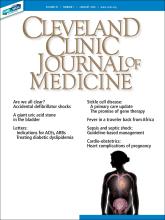
In some genetic disorders, there is a total absence of a protein: the absence of adenosine deaminase (ADA) in severe combined immunodeficiency, enzyme deficiency in some lysosomal storage diseases, protein deficiency in several coagulopathies, and lack of uricase in humans, leading to hyperuricemia and gout. In other disorders, the genome dictates the translation of defective proteins or proteins that interfere with normal functioning of the wild-type protein, such as in sickle cell disease.
There is a myriad of mechanisms by which our genome directly or indirectly contributes to disease or disruption of homeostasis. Monogenic disorders are the most straightforward and have been targeted in trials of directed gene therapy. Successes have been few but significant, including treatments for a devastating retinal dystrophy, ADA deficiency, and spinal muscular atrophy.
Strategies have been tried for genetic disorders characterized by deficiency of a necessary protein. Protein replacement therapy is currently available for several disorders, but routine success is hampered by immunogenicity of the replacement protein, as well as challenges in getting the protein or enzyme to the organs where it is most needed. Attempts to mask enzymes from the immune system by encasing them in artificial membranes or molecules of polyethylene glycol (pegylation) have met with limited success.
Organ transplant as a replacement source for the missing or defective protein has been used with variable success in some diseases. As discussed in 2 papers in the current issue of the Journal (by Onimoe and Rotz on page 19 and by Curtis and Shah on page 28), bone marrow transplant has provided clinical benefit in patients with sickle cell disease. But the need for “conditioning chemotherapy” before transplant and the possibility of graft-vs-host disease afterward pose significant challenges for the individual patient, and limited suitable donor availability and the technological demands of the procedure remain challenges on a societal level.
For some diseases, a biochemical work-around can be used. A missing biochemical product from a genetically defective pathway can sometimes be provided, or a mechanism for sopping up an excess of abnormal product can be introduced (eg, monoclonal antibody, soluble receptor, enhanced cellular receptor function). And in sickle cell disease, the pathologic sickling process can be at least transiently ameliorated with transfusion of normal red blood cells or with hydroxyurea or voxelotor therapy.
But arguably the most elegant approach is to remove a dysfunctional gene and replace it with a normal one, or to add a missing gene to the genome. While this may not always prevent the generation of protein-neutralizing antibodies, successful gene replacement may only need to be done once, and may not require ongoing medication.
The ethical and pragmatic technical concerns and challenges for this approach have thus far been significant and limiting. There are ethical reservations regarding the possibility of affecting germline DNA, with unknown consequences to potential offspring. There have been complications associated with viral gene delivery vectors, and challenges remain with how to target the gene-bearing viral Trojan horse to only the desired organ and cell locations.
And that brings us to the CRISPR-Cas9 technology of gene engineering.1 The guts of the technology lie in a prokaryotic endonuclease (Cas9) that carries with it a guidance RNA strand that can target and bind a specifically defined DNA sequence. Once bound, the endonuclease can cause double-strand breaks in the DNA. The awesome power of this technology is that the guidance RNA strand can be manipulated almost at will to provide pinpoint targeting within the genome. Using information gleaned from the Human Genome Project, virtually any gene can be spliced out, including incorporated viral DNA (think human immunodeficiency virus, Epstein-Barr virus, hepatitis B). It is intriguing to me that this “primitive” prokaryotic adaptive immune response to viral infection is effective in mammalian cells, where the enzyme-RNA complex is required to traverse the nuclear membrane in order to access the genome.
The therapeutic possibilities are striking. The nuclease portion of the molecular complex can be modulated to block gene promoters similar to the action of inhibitor RNAs. Controlling the DNA repair process after the Cas9 endonuclease-specific binding and genomic clipping also permits the possibility of introducing new base-pair sequences to provide an alternative gene product to the original problematic genome. Preclinical studies have already demonstrated the power of this approach to gene replacement in several animal models of human disease.2
This technology is not cheap, and it may still suffer from challenges of getting the protein-RNA complex to the right cells while avoiding the wrong ones, and the durability and fidelity of the genome modifications in humans remain to be demonstrated. There may also be binding efficiency issues based on the transcriptional state of the specific gene to be targeted due to coiling of chromatin and other factors, and concerns regarding “off-target” binding remain. But the box (hopefully not Pandora’s) of promises is yet only partially unwrapped.
After a year filled with derision, division, and far too many tragedies, it is nice to begin the New Year writing of a promise of hope for patients and families with diseases for which there was previously little.
From all of us at CCJM, best wishes for a happy, healthy, and peaceful 2020. Please take some time to visit our new and evolving website (ccjm.org) and let us know what you think of it.
- Copyright © 2020 The Cleveland Clinic Foundation. All Rights Reserved.






